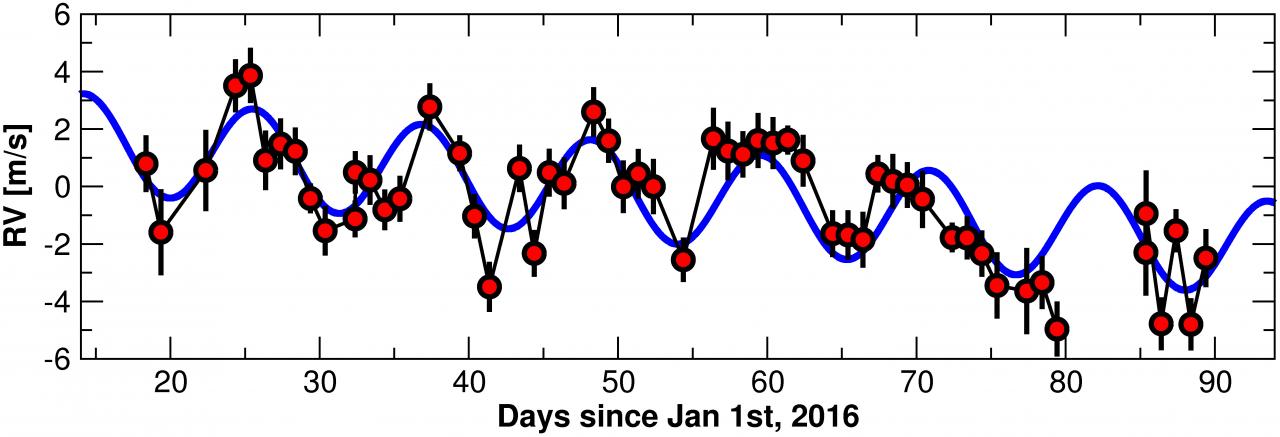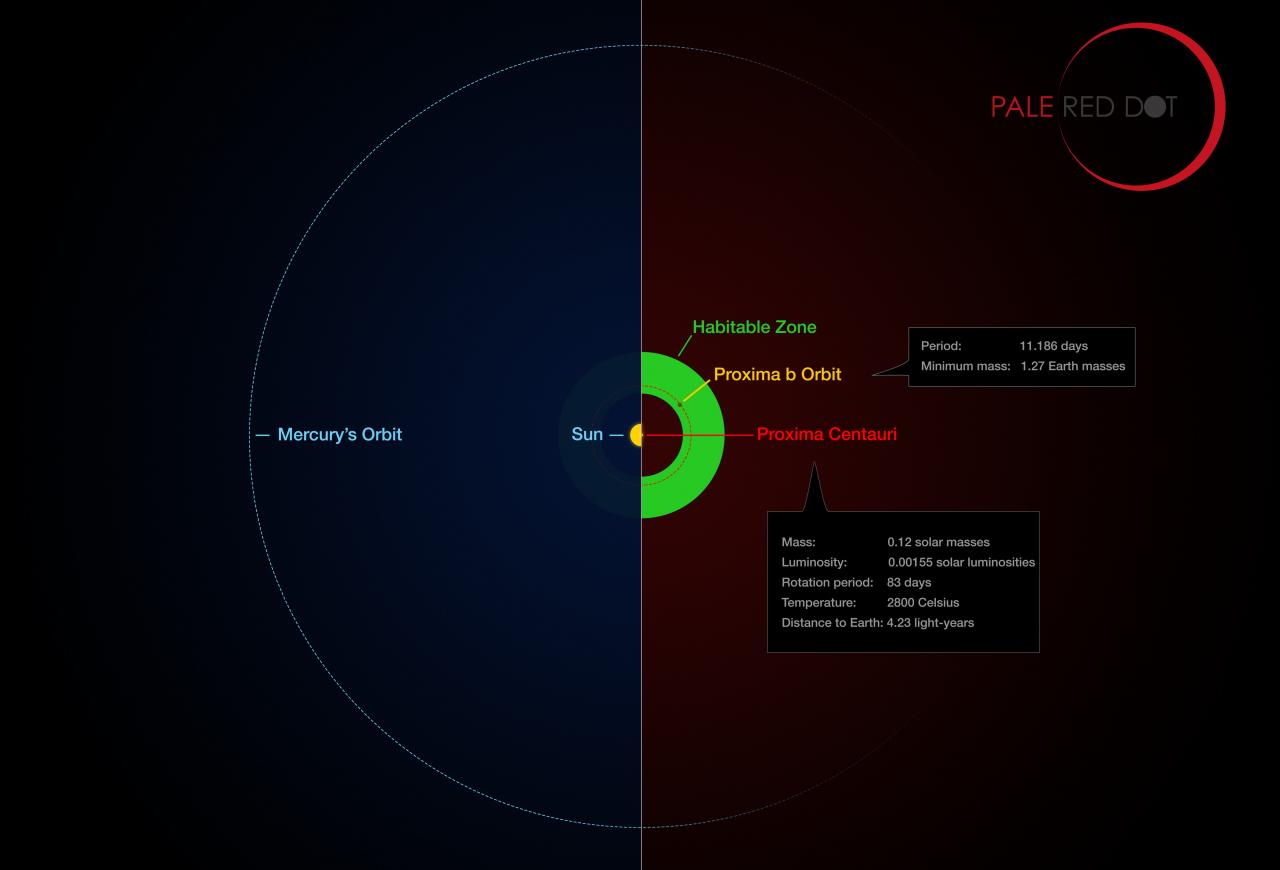Earthlike planet discovered orbiting around nearest star to Sun
Located in the habitable zone, the planet orbits around its star in eleven days and has a mass of at least 1.3 times that of the Earth. Named Proxima B, it orbits around Proxima Centauri, a red dwarf located only four light years away from our own planet
The Institute of Astrophysics of Andalusia (IAA-CSIC) collaborated with an international group of astronomers in a study that recently discovered a planet in the vicinity of Proxima Centauri, the star nearest to the Sun. Named Proxima B, it is located in the habitable zone, i.e., the region around a star where conditions would allow for liquid water, and its mass is estimated to be only somewhat greater than that of the Earth. The discovery, made in the context of the Pale Red Dot observation campaign, will be published tomorrow in Nature magazine.
“We spent two years designing the Pale Red Dot campaign, which observed Proxima Centauri between January and March using telescopes in four different observatories. Although the signals were promising from the start, we checked their consistency every night: it was really exciting to find that there was a planet similar to our own orbiting around the star closest to us”, says Guillem Anglada, researcher at the Queen Mary university (London) in charge of the project.
Researchers were trying to detect the light gravitational pull that an eventual planet would exert on the star, slightly modifying its trajectory and causing oscillations in its light emission. The magnitude of that motion was, however, very small: “We observed that Proxima approaches us and goes away again at the speed of five kilometers per hour, close to walking speed, in cycles of 11.2 days,” says Pedro J. Amado, researcher at the Institute of Astrophysics of Andalusia involved in the study.
The data analysis indicates the existence of a planet with a mass at least 1.3 times that of the Earth orbiting around Proxima Centauri every 11.2 days at a distance of seven million kilometers, which is only 5% of the distance separating the Earth from the Sun, but Proxima Centauri is much colder than the Sun, and the habitable zone is subsequently much closer to it than we are to our own star.

RED DWARVES
80 % of the stars in our galaxy are red dwarves similar to Proxima, weaker and smaller than our Sun. “These types of dwarf stars present, moreover, sudden bouts of activity whose signal can be confused with that of a planet. The observations made by the ASH2 telescope in the SPACEOBS observatory, operated by the Institute of Astrophysics of Andalusia, were instrumental in precluding the possibility of any such confusion,” says Cristina Rodríguez López, IAA- CSIC researcher involved in the project.
The possibility of the existence of life on planets orbiting around red dwarves is an object of debate inside the scientific community. The habitable zone is so close to the star that, even if the planet were to offer adequate temperatures, it could be affected by stellar eruptions, which produce vast quantities of ultraviolet and X radiation. However, it is necessary to analyze the atmosphere of those planets with direct observations.

“Proxima B is the ideal candidate to study the characteristics of planets orbiting around red dwarves, and by extension, to search for hints that may indicate the existence of life,” says Amado (IAA-CSIC). In fact, project Starshot, under the patronage of Stephen Hawking, is contemplating sending a fleet of minute spaceships into the triple Alpha Centauri star system, to which Proxima belongs, to search for potentially inhabitable planets. "In the framework of this project, Proxima B is the only planet we might be able to visit within one generation,” Amado (IAA-CSIC) concludes.
The discovery of Proxima B was possible thanks to the combined use of telescopes from four different observatories, among which the HARPS instrument of the 3.6 meter telescope at the Southern European Observatory (SEO) was fundamental, as well as data from the UVES instrument (at the same observatory) gathered over sixteen years and reanalyzed in the framework of this observation campaign. The discovery was part of the Pale Red Dot project, which made it possible to follow the observation campaign online.
G. Anglada-Escudé et al. "An Earth-like planet candidate in the habitable zone of Proxima Centauri". Nature.
http://www.nature.com/nature/journal/v536/n7617/full/nature19106.html
doi:10.1038/nature19106
Instituto de Astrofísica de Andalucía (IAA-CSIC)
Unidad de Divulgación y Comunicación
Silbia López de Lacalle - sll[arroba]iaa.es - 958230532
http://www.iaa.es
http://divulgacion.iaa.es

